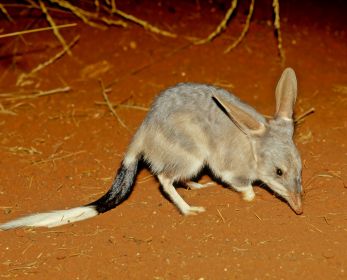Hop into the long weekend: ECU Easter update
Wednesday, 16 April 2025
ECU will be closed on Good Friday (18 April) and Easter Monday (21 April) for the Easter break. That means no classes, no Library services, and no admin support over the four-day weekend. If you’re looking for a quiet place to study, Levels 1 and 2 of the Joondalup campus Library will still be accessible with your ECU ID card. You can check the Library opening hours on the Library Services webpage.
While Easter is a major Christian holiday, over time it’s also become a broader celebration of new life, renewal, and – let’s be honest – chocolate.
Easter Bilby
Here in Australia, we do Easter our own way. You’ll still find the classic hot cross buns and chocolate eggs, but there’s also the Easter Bilby. First introduced in the 1990s, the easter bilby was created as a furry native alternative to the bunny that helps raise awareness for endangered species. Several local chocolatiers now offer bilby-shaped treats, with a portion of proceeds going to conservation. You can also check out these 10 fun facts about bilbies to share this Easter long weekend.
Season of Djeran
Easter signals a seasonal shift. In Australia, it marks the start of the cooler autumn months – an ideal time to slow down, reset, or simply enjoy a few peaceful days away from study.
This year, Easter also falls during Djeran, one of the six Noongar seasons observed across the South West of Western Australia. Djeran spans April and May and signals the arrival of cooler weather, dewy mornings and light southerly winds.
It’s a time of blooming red gums and banksias, and a season for collecting foods like zamia seeds and yanget (bulrush root), and for fishing and hunting turtles. Djeran is also traditionally when shelters were repaired in preparation for the wetter months to come. You can learn more about the Noongar six seasons on ECU’s Kurongkurl Katitjin site.
Ēostre
The name Easter is widely thought to come from Ēostre, a goddess of spring, fertility and the dawn. While historical records are limited, medieval scholar Bede wrote that pagan springtime festivals honouring Ēostre were eventually absorbed into Christian traditions. Symbols linked to her (like hares and eggs) have carried on for centuries as icons of growth and new beginnings. So if you’ve ever wondered why a rabbit delivers eggs, you’ve got ancient mythology to thank. You can find out more about Ēostre and the origins of Easter at the History Cooperative webpage.
